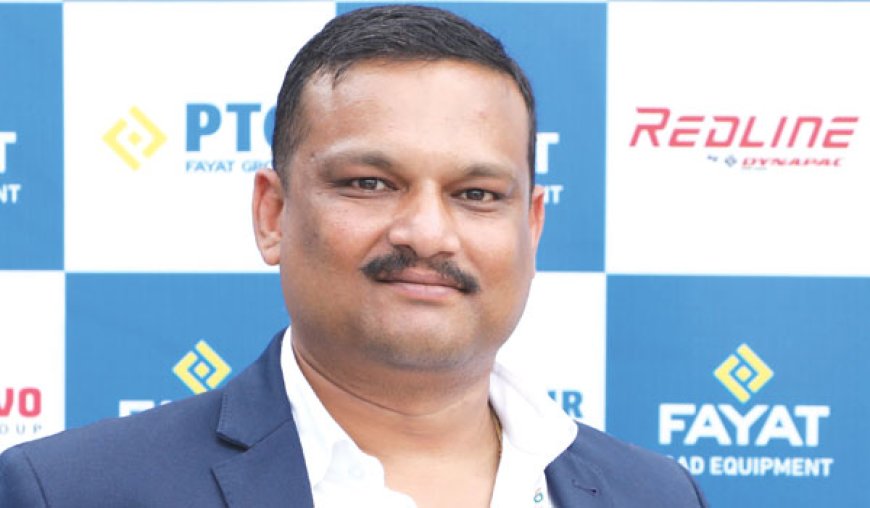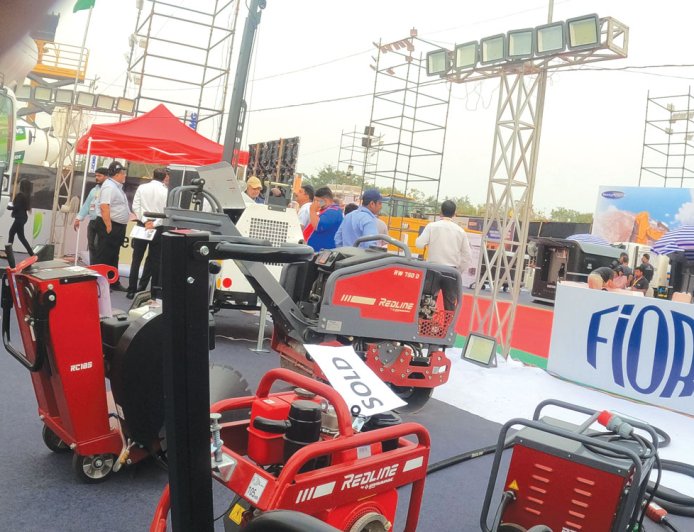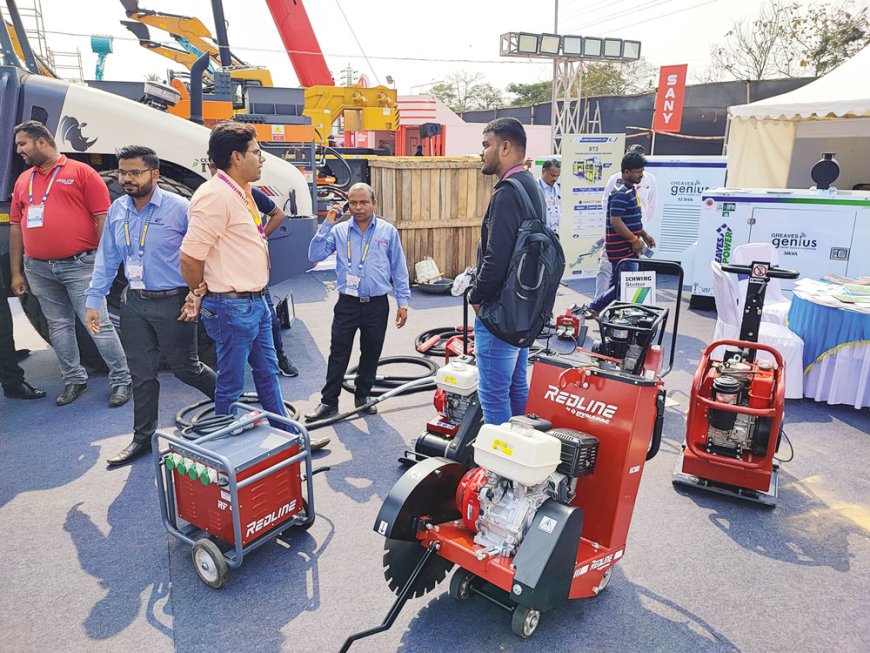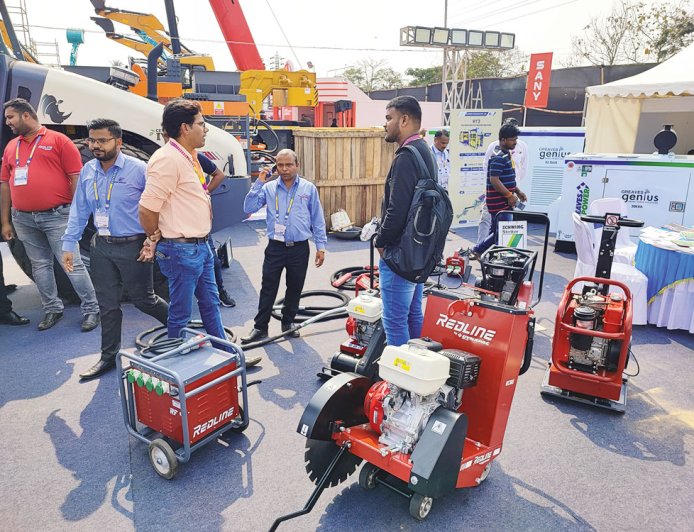A range of light compaction products were showcased to cater to the needs of construction, mining, and infrastructure development projects.

Dilip Kumar Bariki
LCC Product Specialist, Dynapac Road Construction Equipment (India)
What specific goals and priorities at Odisha Mining & Infrastructure International Expo 2024?
The specific goals and priorities at the Odisha Mining & Infrastructure International Expo 2024 would likely revolve around promoting the mining and infrastructure sectors in Odisha, India, and fostering collaboration and innovation within these industries.
Showcasing Odisha’s mining potential: Highlighting the state’s rich mineral resources and investment opportunities to attract domestic and international investors.
Facilitating networking and partnerships: Providing a platform for industry stakeholders to connect, discuss potential collaborations, and form strategic partnerships.
Emphasizing environmentally friendly mining techniques and sustainable infrastructure development to ensure long-term viability and minimize ecological impact.
Showcasing the latest advancements in mining technology, automation, and infrastructure solutions to improve efficiency, safety, and productivity.
Supporting local development: Encouraging participation from local businesses, suppliers, and communities to stimulate economic growth and create employment opportunities.
Positioning Odisha as a competitive player in the global mining and infrastructure markets through targeted marketing, knowledge sharing, and capacity building initiatives.
Overall, the expo aims to catalyze growth, innovation, and sustainability in the mining and infrastructure sectors of Odisha while fostering collaboration and partnerships on both regional and international levels
Can you provide insights into the range of products you showcased at the Expo?
As an Product Specialist, At the Odisha Mining and Infrastructure Expo, a range of light compaction products might have been showcased to cater to the needs of construction, mining, and infrastructure development projects. Here are insights into the typical types of light compaction products that could have been exhibited.
 Forward Plate Compactors: Forward plate compactors, also known as vibratory plates, are compact and versatile machines used for compacting granular soils, asphalt, and paving stones. They come in various sizes and configurations to suit different project requirements.
Forward Plate Compactors: Forward plate compactors, also known as vibratory plates, are compact and versatile machines used for compacting granular soils, asphalt, and paving stones. They come in various sizes and configurations to suit different project requirements.
Reversible Plate Compactors: Reversible plate compactors offer the advantage of dual-direction compaction, allowing operators to maneuver easily around obstacles and achieve higher compaction forces. They are commonly used for compacting cohesive soils and backfill materials. Handheld compactors, such as vibratory hand tampers or plate compactors, are portable tools used for compacting small areas, edges, and corners. They are commonly employed in landscaping, pavement repair, and minor construction tasks.

Rammers (Tamping Compactors): Rammers, or tamping compactors, are handheld or walk-behind machines equipped with a small vibrating plate. They are ideal for compacting confined or hard-to-reach areas, such as trenches, foundations, and narrow spaces.
Walk-Behind Rollers: Walk-behind rollers, also known as pedestrian rollers, are compact machines used for compacting asphalt, soil, and gravel in smaller-scale projects or areas with limited access. They are easy to maneuver and operate, making them suitable for landscaping, road repair, and utility work.
Trench Compactors: Trench compactors are narrow and maneuverable machines designed specifically for compacting trench backfills, utility installations, and pipeline projects. They feature a slim profile to fit into tight spaces and trenches while delivering high compaction forces.
Compaction Accessories and Attachments: Exhibitors might also display a range of accessories and attachments for light compaction equipment, such as extension plates, water tanks for asphalt compaction, and transport wheels for easy maneuverability. These light compaction products offer contractors and construction professionals efficient and effective solutions for achieving proper compaction in various applications, ranging from small-scale projects to larger infrastructure developments.
With the upcoming and ongoing infrastructure and construction opportunities, how do you intend to assess the performance and outcomes of your business for the coming quarters?
Assessing the performance and outcomes of a business in the context of upcoming and ongoing infrastructure and construction opportunities involves several key steps and considerations.
Here’s how you might approach this: Establish Key Performance Indicators (KPIs): Identify specific metrics that align with your business goals and objectives. These could include financial metrics (e.g., revenue growth, profitability), operational metrics (e.g., project completion time, equipment utilization), and customer satisfaction metrics (e.g., client feedback, project success rates).
 Monitor Market Trends and Opportunities: Stay informed about the latest developments in the infrastructure and construction sectors, including upcoming projects, government initiatives, regulatory changes, and industry trends. This information can help you identify new opportunities and adapt your business strategies accordingly.
Monitor Market Trends and Opportunities: Stay informed about the latest developments in the infrastructure and construction sectors, including upcoming projects, government initiatives, regulatory changes, and industry trends. This information can help you identify new opportunities and adapt your business strategies accordingly.
Track Project Pipeline and Sales Pipeline: Keep a close eye on your project pipeline to assess the volume and value of upcoming projects in your target markets. Similarly, monitor your sales pipeline to track the progress of potential deals and opportunities, from initial leads to closed contracts.
Customer Relationship Management (CRM): Maintain strong relationships with existing clients and cultivate new relationships with potential clients. Utilize CRM tools and strategies to track interactions, manage communications, and identify opportunities for upselling or cross-selling services.
Quality Control and Risk Management: Implement robust quality control processes to ensure that projects are delivered to the highest standards and meet client expectations. Additionally, conduct thorough risk assessments to identify and mitigate potential risks that could impact project outcomes or business performance.








